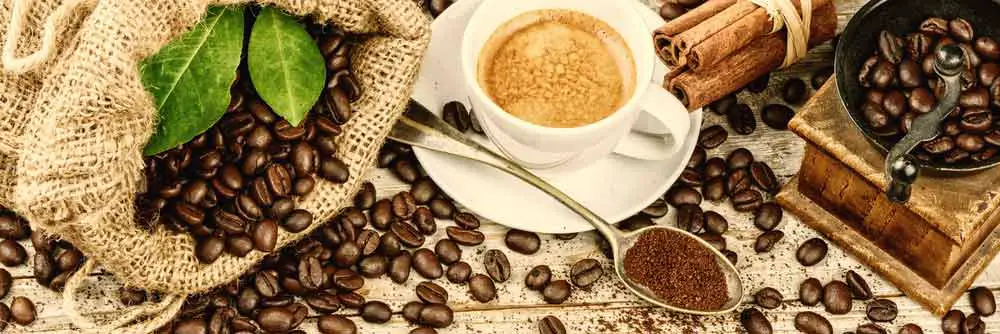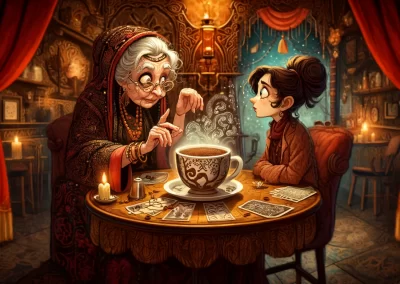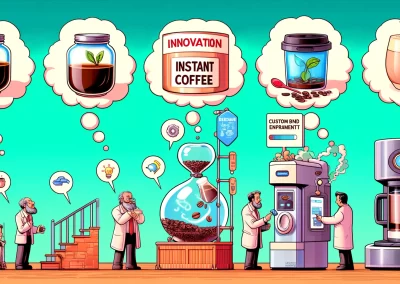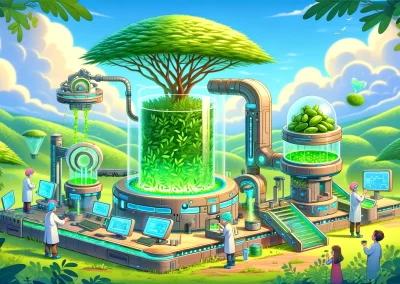A lot of us needs coffee to start the day, but have you ever wondered where did coffee come from? Who discovered it? How did they discover coffee? How did they come up with this amazing drink that can jumpstart our day? Get ready because will take on a journey on how, where, and who discovered coffee.
How Was Coffee Discovered? – Kaldi and the monk
Some time in 700 AD, Kaldi, a goat herder in Ethiopia, saw his goats in a strange behavior. The goats seemed to be dancing, which is in any timeline, not normal. After investigating, he discovered that his goats were eating red berries and thought that this is the cause of their strange behavior.
After this, there have been a lot of stories, some say that Kaldi shared the red berries with a monk, who was happy to find something that will keep him energized and awake as he prays all night. Some say that after Kaldi shared the beans, the monk threw them into the fire where it produced a wonderful aroma, and that became the first roasted coffee. After this, the beans of the red berries were harvested, ground and boiled, and came out as the coffee we know.
Coffee invading the world
Middle East
No one can prove the story of Kaldi, but one thing is for sure, coffee originated from Ethiopia, and we know where it traveled next. Coffee made its way across the Red Sea and into Yemen around the 15th century when it arrived at a port called Mocha. Due to the growing popularity of coffee and the arrival of shipments from the port, coffee became synonymous with Mocha port.
In Yemen, coffee was grown, and it became well known in Persia, Turkey and, Egypt. It became “wine of Araby”, and soon, coffee houses started to operate which are called, “Schools of the Wise” around Arabia as coffee becomes more popular. These places became the center of social activity where people go to share and hear information.
However, coffee didn’t become popular without experiencing its own persecution because of its stimulating effect. The court of Mecca banned coffee, soon, riots broke out until coffee ban was lifted.
Europe And Asia
Arabia did not let anyone grow their own coffee, and if a certain country wanted coffee beans, they need to purchase it from Yemen, and authorities made sure nobody can take fertile beans out of their control. Baba Budan, a Sufi saint from India that was on a pilgrimage to Mecca in 1670, smuggled some fertile beans and started cultivating and growing coffee which started a large scale of coffee farming in Southern India, which until today produces large amount of coffee.
Late 1600s, the Dutch also started growing their coffee that started from a smuggled coffee plant from Yemen that was not successful at first due to their weather.
In 1704, seedling were planted in Indonesia, that were later on called Java.
Europe
In 1570, coffee arrived in Venice and just like in other countries, coffee became popular in no time. The Pope Clement VIII even decided and declared that coffee is a satanic drink. However, the Pope can’t resist coffee and soon baptized it and declared it as a Christian drink.
The Coffee Industry As We Know It TODAY
By 19th century, coffee was already a global phenomenon. It’s being consumed and shipped everywhere in the world and while coffee beans itself has reached almost every corner of Earth, innovations for roasting, brewing and packaging coffee have change a lot over the last 200 years,
Coffee Devices
Coffee Brewer
Born out of the industrial revolution was the percolator which is the first coffee brewing device that is still used up until this day which was invested by a Parisian Metalsmith.
Modern Coffee Roaster
Invented by Jabez Burns, this is the first coffee roasted that didn’t need to be held over fire. He patented the device and became the grandfather of all modern coffee roaster.
First Espresso Machine
In 1901 in Italy, the first espresso machine was created by Luigi Bezzera. This is the first machine that used water and steam under high pressure to brew coffee faster. Luigi designed the machine with his employees in mind. He wants to reduce the time brewing and making coffee, so his employees can get back to work faster.
In 1905, Desiderio Pavoni purchased Luigi’s patent for the espresso machine and made it better since the first machine produces extremely bitter. Desiderio concluded that the bitter taste was a result of high temperature and steam. He then decided that coffee should not be exposed to temperature greater than 195 degrees and should only be exposed to a 9 BAR pressure.
40 years later, an Italian, Achille Gaggia, took the espresso machine another level and extracted the coffee using a piston with a higher level of pressure. This innovation produced a layer of crema where cappuccino was first discovered.
Drip Coffee
in 1908, a housewife from Germany created the first coffee filter from her son’s school materials. This is where she opens her company that runs until today.
Nestle and Nescafé
In 1900’s, Brazilian government approached Nestle to help them find a way to utilize Brazil’s coffee waste. After years of researching, Nestle produced instant coffee with the process of freeze drying coffee which produced Nescafé, one of the world’s leading brand of instant coffee today.
The Second Wave Of Coffee
Starbucks
During the 1960s, Alfred Peet, a Dutch-American whose family roasted coffee beans in Holland, decided to take their business into California. Peet’s Coffee opened in Berkeley in 1966 where early stages of specialty coffee started.
Peet started sharing his coffee knowledge and techniques with his friends, where they joined as his staff over the Christmas to learn the ropes of the business. With Peet’s permission, his friends opened a coffee shop in Seattle using his coffee beans with his store layout. The store was named Starbucks.
Starbucks started by selling their own coffee bean products and didn’t sell any brewed coffee. In 1982, Howard Schultz, a salesman joined Starbucks as their director of marketing. From there, he tried to convince the owners to sell and serve coffee beverages, but the owners didn’t agree and wanted to focus in selling high quality coffee beans.
In 1985, Howard Schultz quits Starbucks and started his own coffee company that focused on serving coffee drinks. After a successful year, Schultz purchased Starbucks and combined their roasting techniques with the Italian café concept, after that, we know how Starbucks became popular and opened hundreds of store all over the worlds.
Today, tons of coffee shops are opening in every corner that focuses on quality roasted coffee beans over mass-produced coffee.
The Coffee Legacy
Going through the history of coffee makes you think how big and popular coffee has become all over the world. In fact, today, coffee is the second-largest commodity traded worldwide, next to oil. And if you still can’t imagine how big coffee is, just know that people consume 400 billion cups of coffee every year. And we know that this will probably continue and increase over time.
From Kaldi, his dancing goats and ancient monks to espresso machines, drip coffee, specialty coffee, the red berries have come a long way and change the world.
As a coffee drinker, I can’t image coffee going away anytime soon. It will probably only get better.









